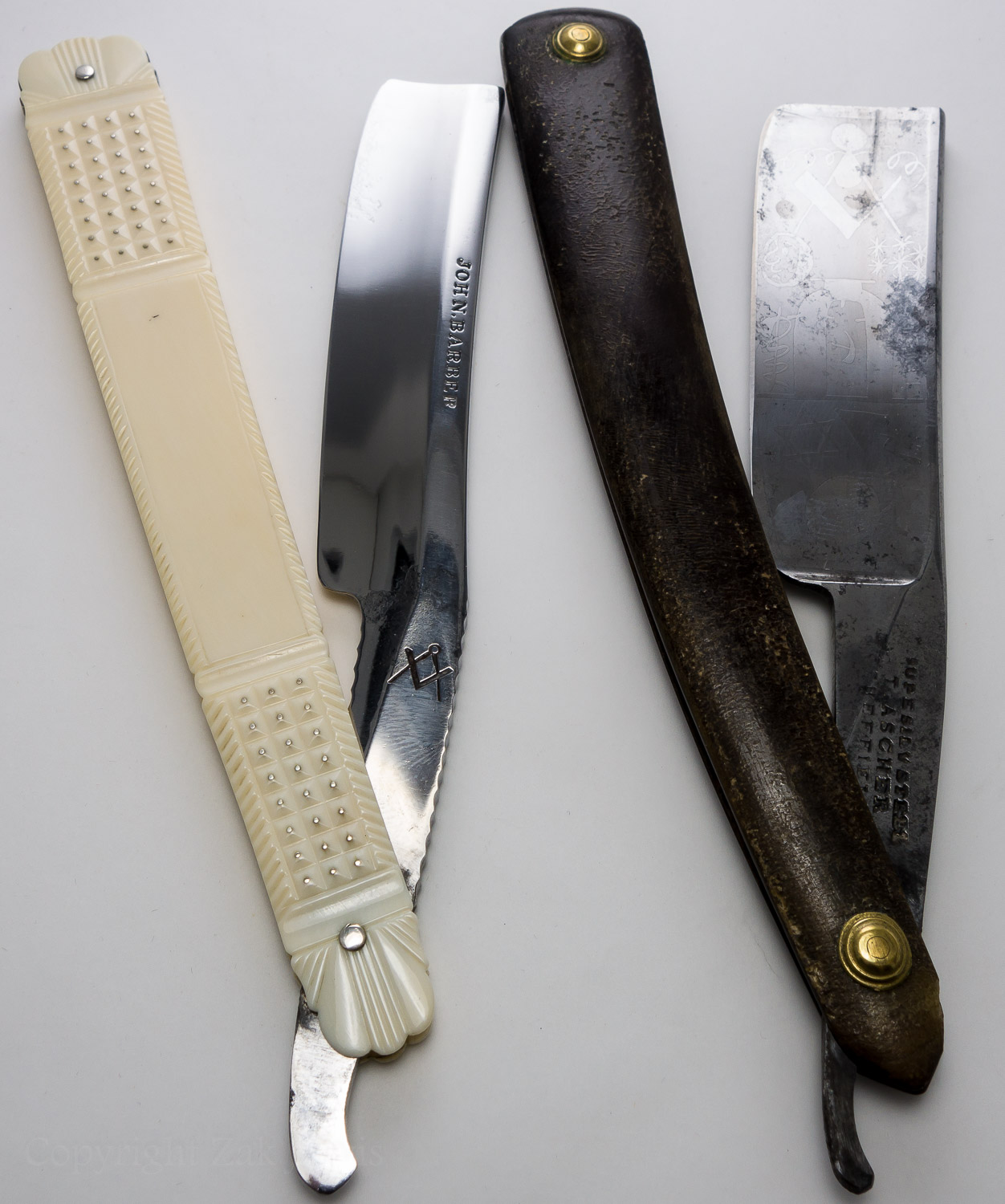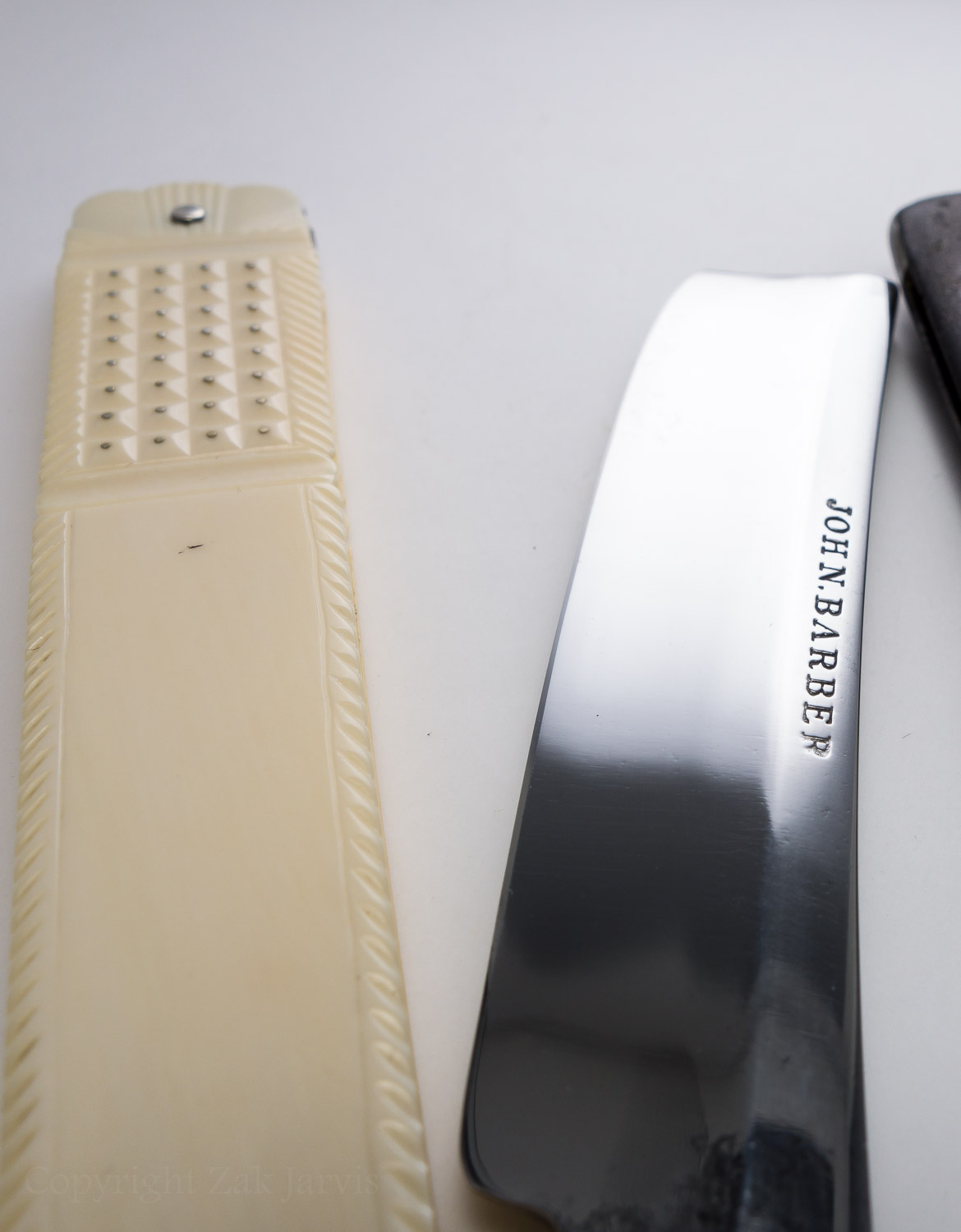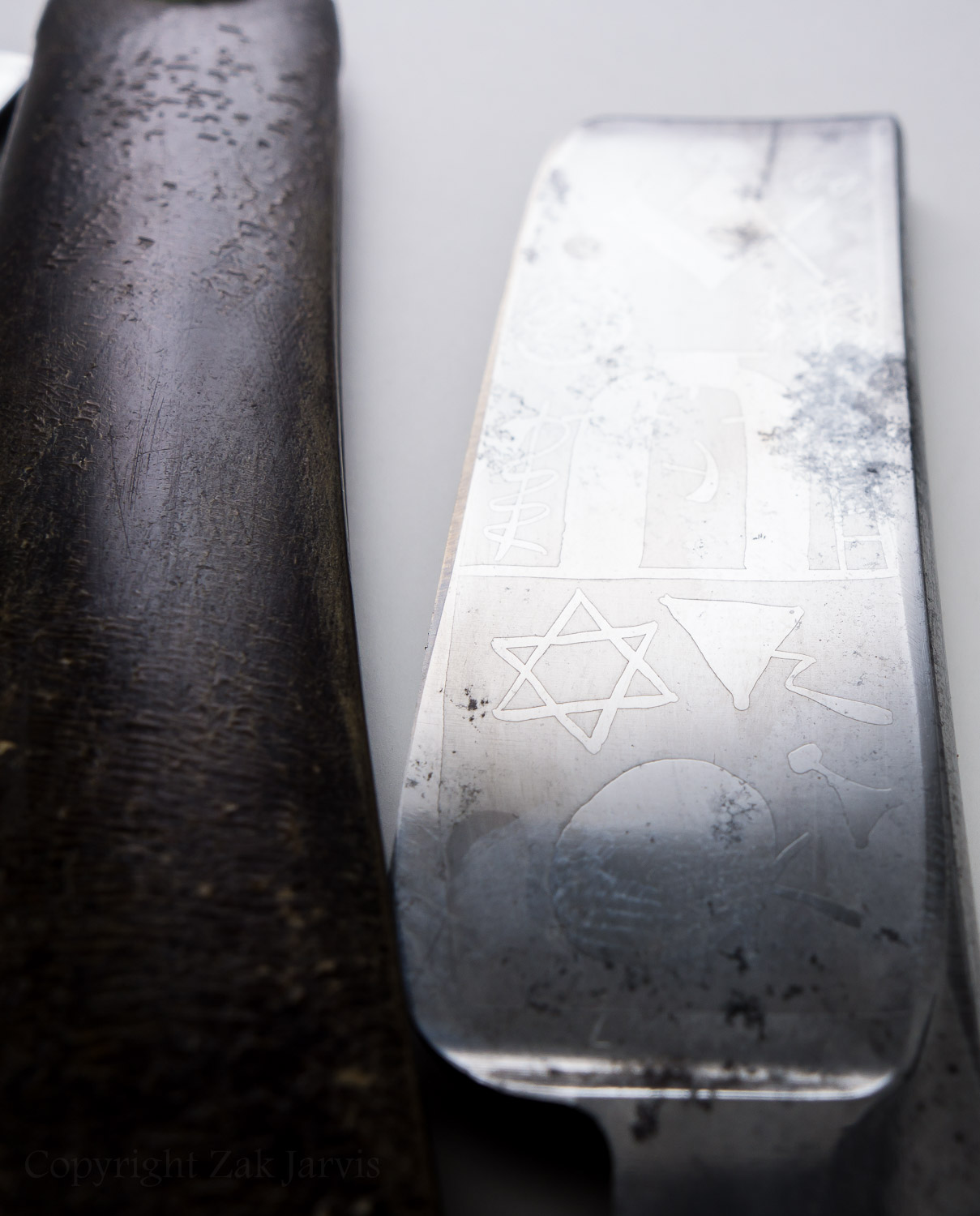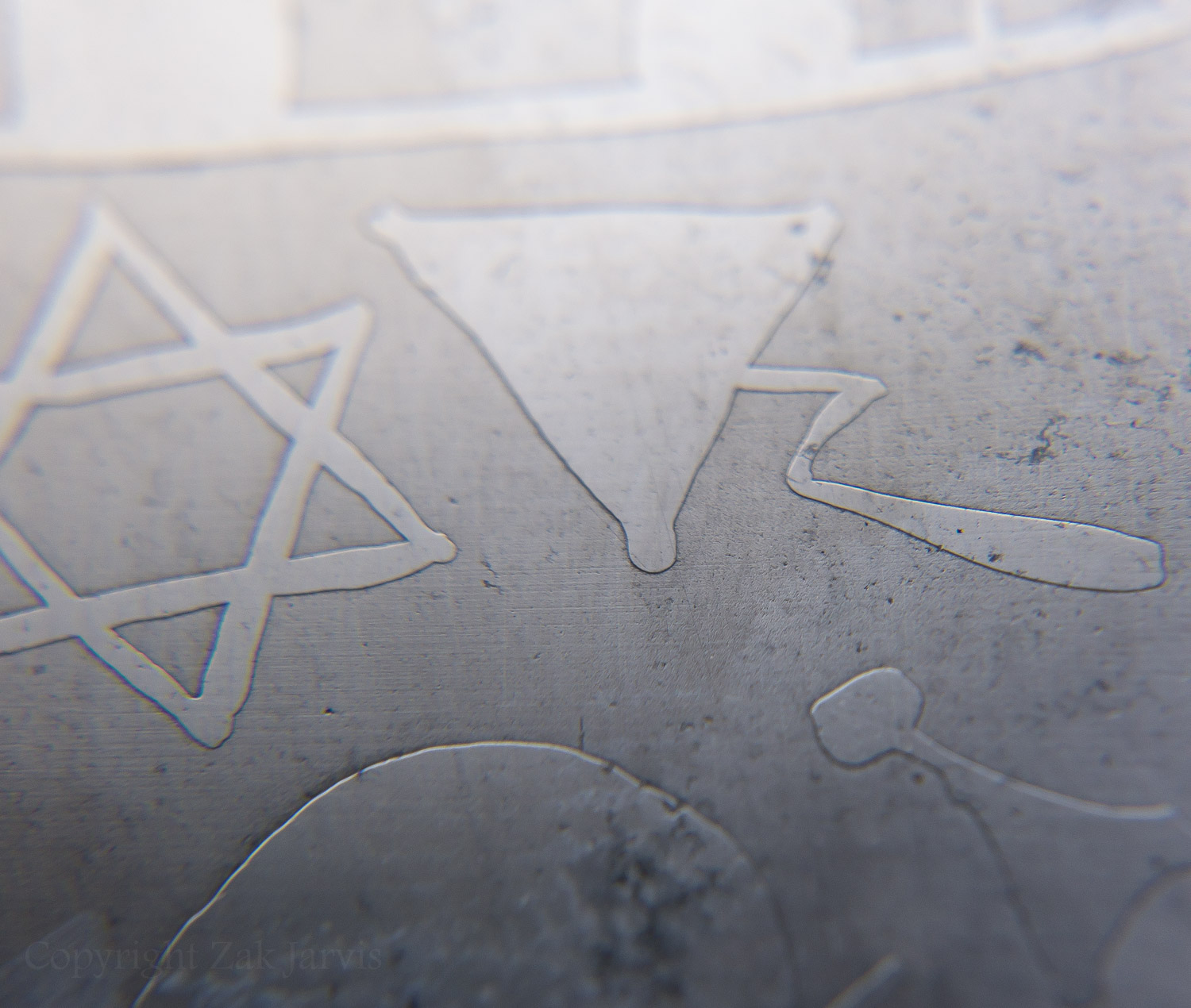Results 1 to 10 of 33
Thread: Vintage Finishes
-
12-13-2015, 03:30 PM #1
 Vintage Finishes
Vintage Finishes
I thought about this from a Rare Razor thread which Voidmonster responded to.
Here is what he said: "The Sheffield crocus polish was accomplished by using specially prepared iron oxide -- called crocus because it looks like the pollen that clusters on the stamen of a crocus -- and mix it with beeswax. That got coated onto a leather-wrapped wheel. That wheel was used for the final polish. Essentially, a very lustrous, mirror finish."
The part which I am interested in is the 'lustrous, mirror finish.'
This makes me think that there may be a difference between a mirror finish and a 'lustrous mirror finish.'
Further, this distinction may indicate that a mirror finish is a cheap slight of hand process, and the lustrous mirror finish is simply unattainable in the present era?
"Call me Ishmael"
CUTS LANE WOOL HAIR LIKE A Saus-AGE!
-
12-13-2015, 03:34 PM #2

Interesting, and I think I understand your point, would be interesting to see if we could get pics of an example, for instance say, the difference between, "shinier than a diamond in a goats azzz" versus the lustrous mirror finish you mention.
Zak - do you have any pics that illustrate the difference?
-
12-13-2015, 03:42 PM #3

Maybe this is going over my head but are you asking if there is a difference from a mirror finish and a shiny mirror finish?

-
12-13-2015, 04:13 PM #4
-
12-13-2015, 04:16 PM #5Senior Member



- Join Date
- Mar 2012
- Location
- Thunder Bay, Ontario, Canada
- Posts
- 17,325
Thanked: 3228
I am thinking it is the difference between gloss and semi gloss.
BobLife is a terminal illness in the end
-
12-13-2015, 04:23 PM #6Senior Member



- Join Date
- Apr 2012
- Location
- Diamond Bar, CA
- Posts
- 6,553
Thanked: 3215
Yes, I do believe there is a difference in the finish and it was intentional on the part of Sheffield. You ever notice you don’t see a lot of red rusty Sheffield’s?
Here is a good thread on the Sheffield polish and some that are trying to replicate it. Some in Sheffield are working on it and have achieved some level of success, as have some here. The real intricacies of exactly how it was done may have been lost to time…
-
The Following User Says Thank You to Euclid440 For This Useful Post:
WW243 (12-13-2015)
-
12-13-2015, 04:48 PM #7

For anyone who has worked with silver, to me this is not a legitimate analogy but it illustrates the point. If you solder silver and clean the piece (I forgot what we used), and go straight to polish the piece would polish but it would lack depth for a better word. If after cleaning up the piece was dipped in liver of sulfur the piece could be brought to a lustrous mirror finish, or some other description of polish with depth.
"Call me Ishmael"
CUTS LANE WOOL HAIR LIKE A Saus-AGE!
-
12-13-2015, 05:05 PM #8Senior Member



- Join Date
- Apr 2012
- Location
- Diamond Bar, CA
- Posts
- 6,553
Thanked: 3215
Some old Sheffield books, describe the finishing technique, as a Burnished Finish, not polished, designed to seal the steel for protection against water.
I do believe they may have succeeded.
I cleaned up an old Sheffield last night with just some 1k paper and Chrome compound on a spiral sewn and loose cotton wheel. They used red rouge on a seal skin wrapped, wooden wheel.
-
The Following User Says Thank You to Euclid440 For This Useful Post:
MW76 (03-18-2016)
-
12-13-2015, 05:39 PM #9

I fail to see the mystery to the Sheffeild finish.
I can see how a finish would in the short term effect rust etc. But after 100 years I would think the composition of the steel would be much more important
-
12-13-2015, 05:49 PM #10

Following those links will definitely help. Unfortunately, it's a difficult thing to get a picture of because essentially it's trying to get a picture of nothing. All the same, I'll give it a shot.

On the left is my personal best attempt at a Sheffield Crocus polish. On the right is an 1840's T. Ascher Masonic that has never been touched, and thus still has the original crocus (in the non-etched areas of the blade -- the tang was glazed, not crocus -- many old Sheffield razors used different surface treatments on different parts of the blade).
The John Barber was in very good condition when I got it, but it had a couple of bad spots on the blade. I used 10Pups' contact grinder to dig down below the pits as uniformly as I could, then I used the highest grit belt he has to polish it, then I used polishing grease on buffing wheels (black, then brown, then green, then white), and finally, I put Mother's polish on a buffing wheel and used *THAT*. A lotta work.
If you right click and view the image full-size, you can just barely see the difference in the surface, but it does look pretty good.
Get closer, and you start to see though.


The surface on that Ascher is damn near featureless. Even really close up. And to be really clear, the parts I'm talking about are the un-etched ones. What makes up the decoration on the blade. They did that by drawing the symbols onto the blade in wax, putting a border around them and putting acid over it, so that the symbols remained clean and crocus while everything that wasn't the symbol got etched.
At that distance, the striations on the Barber are visible, as well as the tiny amount of remaining surface pittting. The contact grinder made a good, uniform surface and then the polishing compounds sort of 'melted' the features that left.
I wasn't able to get a good macro picture of the surface of the John Barber, but you can see what I'm talking about clearly enough in the last picture.
Getting closer to the T. Ascher, you can really see what I'm talking about.

The non-etched parts are essentially featureless. That is what makes the crocus polish.
Mostly, old Sheffield blades were done with a glaze finish (which doesn't look too different from the etched parts of the T. Ascher) on the tang and the blades crocus. Occasionally though, they'd mix it up. John Barber regularly did crocus polished tang and spine while leaving the blade face glazed.
Old workhorses like the various 'For Barbers' razors rarely if ever had a crocus polish anywhere on them. They simply were not fancied up like razors intended to be sold to and used on a single person.
I'm of the opinion that the old crocus finish is an entirely achievable thing with modern methods. There's nothing particularly special about it other than the time and care it took to produce.
Plus, let's not forget that polishing was the last task performed and it was done by the apprentices. IE, children. Admittedly children who'd been starved and beaten until they got it right, but children all the same.-Zak Jarvis. Writer. Artist. Bon vivant.
-
The Following 5 Users Say Thank You to Voidmonster For This Useful Post:
32t (12-13-2015), engine46 (12-15-2015), jmercer (12-13-2015), Walterbowens (12-15-2015), WW243 (12-13-2015)


 115Likes
115Likes LinkBack URL
LinkBack URL About LinkBacks
About LinkBacks






 Reply With Quote
Reply With Quote


